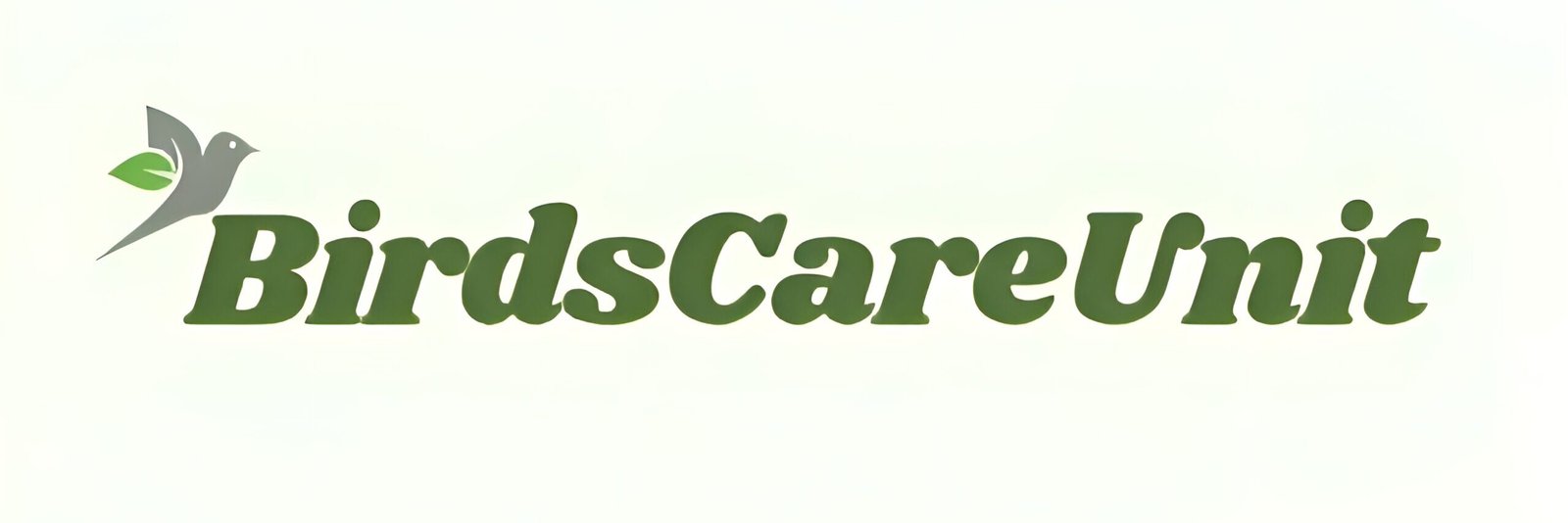What Cage is Best for Cockatiels

Introduction
I have recently bred twenty-eight new cockatiel babies on my small farm, and I’m really excited about it. To ensure they grow up healthy and sharp, I need to focus on feeding the parent cockatiels properly so they can take care of their babies. I also need to provide safe cages to protect them from pets like dogs and cats. In today’s blog, I’ll be discussing how to choose the best cages for cockatiels and how to create an ideal breeding environment for adult cockatiels. This will help any breeder become successful in their breeding journey.
Understanding Cockatiel Behavior and Needs
Cockatiel Behavior
Before diving into cage selection, it’s essential to understand the behavior and natural needs of cockatiels. These social birds are known for their playful and affectionate nature, but they also have specific needs, especially during the breeding season.
- Social Interaction: Cockatiels thrive on social interaction, both with other birds and with humans. They are intelligent and require mental stimulation to prevent boredom and behavioral issues.
- Territoriality: During breeding, cockatiels can become territorial. Providing ample space is crucial to minimize stress and aggression.
- Nesting Instincts: Females have strong nesting instincts and prefer secure, quiet places for egg-laying.
- Physical Activity: These birds are active and need space to fly, climb, and exercise to maintain their health.
Key Factors in Choosing the Best Cage for Cockatiels
Size and Dimensions
The size of the cage is one of the most critical factors. A spacious cage ensures that cockatiels can move freely, engage in natural behaviors, and feel comfortable.
- Minimum Size for Single Cockatiel: At least 24″x18″x24″
- Recommended Size for Breeding Pair: At least 24″x24″x24″, but larger dimensions are preferred to provide more space for activities and nesting.
Bar Spacing and Material
Proper bar spacing prevents escape and injury. The material should be safe and durable.
- Bar Spacing: No more than ½ inch (1.27 cm) to prevent the birds from getting their heads stuck.
- Material: Choose non-toxic, durable materials like stainless steel or powder-coated metal. Avoid painted cages that can chip and be ingested by the birds.
Cage Shape and Design
The shape and design influence how well the cage meets the birds’ needs.
- Horizontal Space: Cockatiels prefer horizontal space for flying. A wider cage is better than a taller one.
- Shape: Rectangular cages provide more usable space and corners for security compared to round cages.
Accessibility and Maintenance
Ease of access and maintenance is important for both the birds and the owner.
- Doors and Openings: Large doors facilitate easy access for cleaning and interacting with the birds.
- Removable Trays: Make cleaning simpler and maintain hygiene.
- Feeder Doors: Separate doors for food and water dishes are convenient for daily maintenance.
Additional Features
Consider additional features that enhance the living environment for cockatiels.
- Perches and Swings: Include multiple perches of varying textures and diameters to promote foot health.
- Toys and Enrichment: Provide toys, mirrors, and foraging materials to keep the birds mentally stimulated.
- Nesting Box Compatibility: Ensure the cage can accommodate a nesting box if breeding is planned.
Top Cage Recommendations for Cockatiels
1. Prevue Hendryx Pet Products Wrought Iron Flight Cage
- Dimensions: 31″x20″x53″
- Bar Spacing: ½ inch
- Material: Powder-coated wrought iron
- Features: Large front doors, multiple feeder doors, removable bottom tray, ample space for perches and toys.
2. Vision II Model M02 Bird Cage
- Dimensions: 24″x15″x34.5″
- Bar Spacing: ½ inch
- Material: Non-toxic coated metal
- Features: Deep base to contain mess, double doors for easy access, integrated seed/water cups.
3. HQ Victorian Top Bird Cage
- Dimensions: 32″x21″x60″
- Bar Spacing: ½ inch
- Material: Powder-coated metal
- Features: Victorian-style top, large front doors, several perches, feeder doors, and wheels for easy mobility.
4. Yaheetech 61-inch Playtop Bird Cage
- Dimensions: 24″x22″x61″
- Bar Spacing: ½ inch
- Material: Powder-coated steel
- Features: Playtop area with ladders and perches, large front door, multiple feeder doors, removable bottom tray.
5. A&E Cage Co. Flight Bird Cage
- Dimensions: 32″x21″x35″
- Bar Spacing: ½ inch
- Material: Powder-coated metal
- Features: Wide front doors, multiple perches, feeder doors, removable bottom tray for easy cleaning.
Advanced Tips for Setting Up a Cockatiel Breeding Environment
Location and Placement
The placement of the cage in your home is crucial for minimizing stress and creating a conducive breeding environment.
- Quiet Area: Place the cage in a quiet area away from high traffic, loud noises, and direct sunlight.
- Stable Temperature: Ensure a stable room temperature, ideally between 70-80°F (21-27°C). Avoid drafts and extreme temperature fluctuations.
- Humidity Control: Maintain humidity levels around 40-50% to mimic their natural habitat. Use a humidifier if necessary.
Cage Setup: Inside the Cage
A well-organized cage setup is essential for the comfort and health of your cockatiels.
- Nesting Box: Secure a nesting box at an elevated position. Ensure it’s stable and provides a sense of security for the female.
- Perches: Use natural branches and varying diameters to promote foot health and natural climbing behavior.
- Toys and Enrichment: Regularly rotate toys to keep the birds engaged. Include foraging toys to stimulate their natural instincts.
- Feeding Stations: Place food and water dishes in easily accessible locations. Ensure they are cleaned regularly to prevent bacterial growth.
Nutrition and Health Care
Proper nutrition is fundamental for the health and breeding success of cockatiels.
- Balanced Diet: Provide a mix of high-quality pellets, seeds, fresh fruits, and vegetables. Include leafy greens, carrots, apples, and berries.
- Protein and Calcium: Increase protein and calcium intake during the breeding season. Offer boiled eggs, cuttlebone, and mineral blocks.
- Hydration: Ensure fresh, clean water is always available. Consider adding vitamins and supplements as recommended by an avian vet.
Monitoring and Supporting Breeding Behavior
Understanding and supporting natural breeding behaviors is key to successful reproduction.
- Courtship Observation: Watch for signs of courtship, such as the male singing, dancing, and feeding the female.
- Nesting Behavior: Ensure the female has access to nesting materials like shredded paper and untreated wood shavings.
- Minimize Disturbances: Keep the environment calm and stable once eggs are laid to avoid stressing the birds.
Incubation and Chick Care
Careful attention during incubation and chick rearing ensures healthy offspring.
- Egg Candling: Use a small flashlight to check the development of the embryos. Handle eggs carefully to avoid damage.
- Temperature and Humidity: Maintain consistent temperature and humidity levels to support incubation. Use a brooder if necessary.
- Chick Feeding: Initially, parents will feed the chicks. Supplement with hand-feeding if necessary using a high-quality formula.
- Socialization: Gently handle the chicks to accustom them to human interaction. This helps in taming and ensures they become well-socialized pets.
Common Breeding Challenges and Solutions
Infertility
Infertility can be due to various factors, including health, age, and compatibility.
- Health Checks: Ensure both birds are healthy and free from diseases. Regular vet visits are essential.
- Compatibility: Ensure the breeding pair is compatible and bonded. Sometimes switching partners can resolve infertility issues.
- Genetic Diversity: Avoid inbreeding by selecting birds from different genetic backgrounds.
Aggression
Aggression can be a problem, especially during the breeding season.
- Space: Ensure the cage is large enough to reduce territorial conflicts.
- Separate Zones: Create separate areas within the cage using perches and toys to give each bird its own space.
- Observation: Monitor interactions and separate birds if aggression becomes severe.
Egg Binding
Egg binding is a serious condition where the female cannot lay an egg.
- Calcium: Ensure adequate calcium in the diet. Provide cuttlebone and mineral supplements.
- Health Monitoring: Watch for signs of egg binding, such as straining, lethargy, and swelling. Immediate veterinary care is essential if suspected.
Feather Plucking
Feather plucking can result from stress, boredom, or poor nutrition.
- Enrichment: Provide a variety of toys and activities to prevent boredom.
- Diet: Ensure a balanced diet with all necessary nutrients.
- Environment: Create a calm, stable environment to reduce stress.
Infections
Infections can affect both the breeding pair and the chicks.
- Hygiene: Maintain a clean cage and environment. Regularly clean all accessories and change nesting materials.
- Health Monitoring: Regularly check for signs of illness, such as changes in behavior, appetite, or droppings. Seek veterinary care promptly if needed.
Post-Breeding Care
After the breeding season, it’s essential to provide proper care to ensure the long-term health of your cockatiels.
- Rest Period: Give the breeding pair a rest period to recover. Reduce breeding stimuli and provide a stable, stress-free environment.
- Continued Nutrition: Maintain a nutritious diet to help the birds regain strength and health.
- Stable Environment: Gradually reintroduce changes to their routine or habitat to avoid stress.
- Health Monitoring: Regularly monitor the birds for any signs of illness or stress. Schedule a post-breeding health check-up with an avian veterinarian.
Expanding Your Breeding Setup
As you gain experience, you might consider expanding your breeding setup. Here are some tips for scaling up:
Multiple Cages
Setting up multiple breeding cages can help manage more pairs and improve breeding success.
- Consistent Setup: Ensure each cage meets the recommended size and setup guidelines.
- Record Keeping: Maintain detailed records of each breeding pair, including health history, breeding dates, and chick development.
Networking and Education
Building a network and continuing education are vital for ongoing success.
- Networking: Connect with other breeders and join avian clubs or associations to share knowledge, experiences, and resources.
- Education: Continuously educate yourself about cockatiel breeding through books, online resources, and seminars. Staying informed helps in improving your breeding practices and achieving better results.
Conclusion
Breeding cockatiels is a rewarding endeavor that requires dedication, knowledge, and careful planning. By choosing the right cage, setting up an ideal breeding environment, and providing comprehensive care, you can ensure the health, comfort, and reproductive success of your cockatiels. This comprehensive guide offers advanced tips and essential information to help you create a perfect breeding setup, ensuring a fulfilling and successful breeding experience.
Remember, successful breeding is not just about producing chicks but also about ensuring the well-being of your breeding pair and their offspring. With patience, care, and attention to detail, you can enjoy the joys of breeding cockatiels and contribute to the preservation and appreciation of these beautiful birds.


